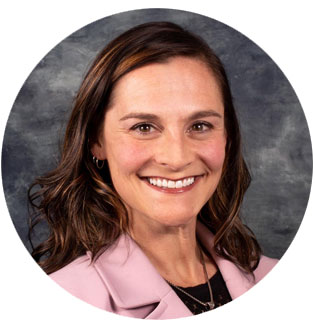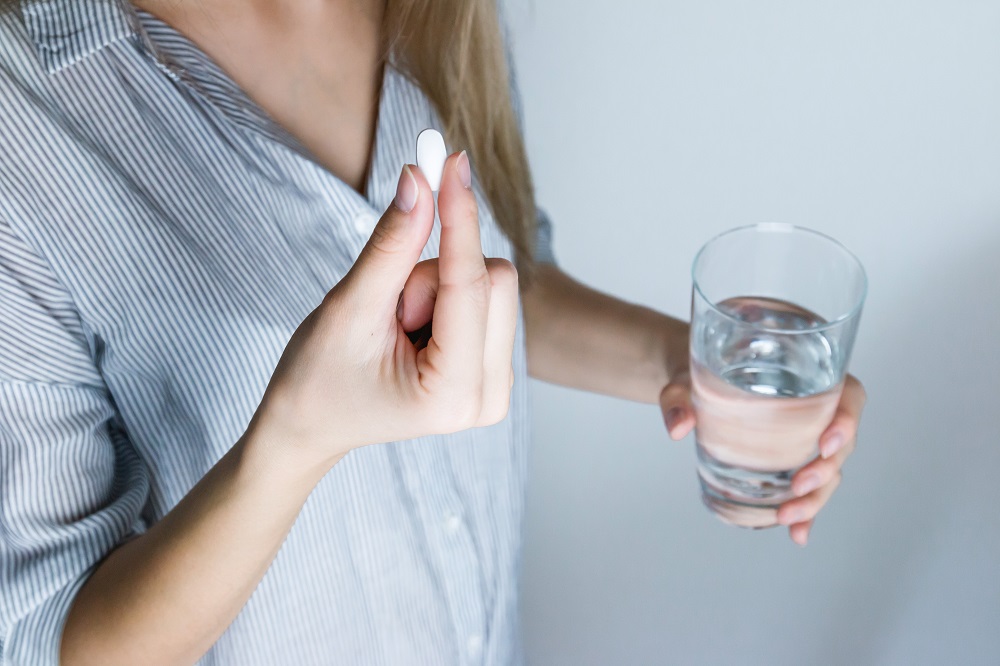MEDICAL DISCLAIMER: This website and all content (graphics, text and other materials) are for informational purposes only. This information does not take the place of medical advice from a doctor and should not be substituted for medical advice, diagnosis or treatment. Always seek out the advice of a qualified health provider with any questions about a medical condition. 
“Opiates can start as medication and escalate into drug abuse. This happens because when women begin to misuse drugs they alter their mind and mood, manufacturing a sense of “well being.” For women, this can be a slippery slope because we can convince ourselves that a “substance” is helping us be more productive or cope with uncomfortable feelings. This unintended byproduct of the medication is why is it so risky and destructive.” ~ Dr. Bader, Chief Clincial Officer at Women’s Recovery
The Opioid Crisis Continues to Ravage
The opioid crisis is in full swing and there is no hope that things will get better any time soon. In 2017, there were 70,237 drug overdose deaths reported in the United States. Of this number; 47,600 overdose deaths were specifically caused by opioids (this includes heroin and prescription painkillers). Not only is this the highest number of drug-related deaths in a single year in U.S. history, the rate of overdose deaths increased by 9.6 percent from 2016. Needless to say, these statistics are alarming. What is even more alarming is the ever-increasing number of women who are dying from a lethal opioid overdose.
Reasons Why Many Women Become Addicted to Opioids
There are a number of reasons why women become addicted to heroin or prescription painkillers.
- The first and most obvious reason women develop an opioid addiction is that they experimented with these drugs to catch a buzz and ultimately developed a dependence. Heroin and prescription painkillers like Fentanyl and Oxycodone are highly addictive. What starts out as harmless exploration can quickly develop into a full-blown addiction.
- Another reason why women become addicted to opioids is because of chronic pain. Prescription opioids have been the go-to pain management solution among doctors for more than a decade. Unfortunately, the majority of these doctors were lied to by big pharmaceutical companies who told them these drugs were not addictive. As a result, millions of women became addicted to medications like Oxycontin and Hydrocodone.
- As these drugs became more restricted by the U.S. Drug Enforcement Agency (DEA), they were harder to get. Because they were in high demand, pills were sold on the street for outrageous prices – sometimes as much as $50 per pill. Women turned to heroin because it was cheaper and easier to get. Estimates suggest that as much as 80 percent of new heroin users start using the stuff because they are hooked on painkillers.
Of course, women use opioids for other reasons as well. These include:
- Coping with trauma like domestic violence or sexual assault
- Stress management
- Numbing emotional pain
- Mental disorders like bipolar
- Just because it feels good
- Social pressure from peers
- Curiosity
It really doesn’t matter why a woman starts using opioids. The reality is that once a woman begins using these drugs regularly, addiction is sure to follow. And, unfortunately, dependence leads to destruction, devastation, and death in many cases.
Four Ways Opioid Addiction Affects Women
Before we discuss how to get help for an addiction, let’s talk about how opioid substances affect women. You should know that opioid addiction affects women differently than men. Sadly, many women begin using heroin or start popping pills with a boyfriend or husband. They do so without knowing that opioid dependence will impact them much differently. Here are four ways opioid addiction specifically affects women:
#1 Addiction Seems to Progress Faster in Women Than Men
For reasons that are unclear, the disease of addiction unfolds much more rapidly in women than men. Biological and genetic factors can most likely explain why this happens. However, further studies are needed to determine exactly why women are more susceptible to addiction than men. Nevertheless, there is no doubt about it. Women become addicted to opioids faster than men. They are also more sensitive to the feel-good chemicals in the brain that are ignited by heroin or prescription painkillers. This means, they will quickly develop a tolerance, which inevitably leads to addiction.
#2 Women are More Likely to Experience Chronic Pain
There has been a lot of research conducted in recent years about how chronic pain specifically affects different genders and the verdict is in. Women experience chronic pain much more frequently than men. There are a number of reasons for this. Because women are more likely to experience chronic pain, this means they are also going to seek pain management more often than men. This leaves them susceptible to being prescribed a narcotic painkiller by their doctor.
#3 Women Experience More Trauma, Which Triggers Addiction
Trauma and addiction go hand-in-hand. There is a reason for this. Experiencing something traumatic can lead to Post-Traumatic Stress Disorder (PTSD) and other mental health issues. Women are twice as likely as men to develop PTSD from a traumatic experience. Statistics indicate that at least one in five women will be raped at some point during her life. In addition to sexual violence, women are also victims of domestic violence and childhood abuse. This leaves them susceptible to experiencing post-traumatic stress. Women often turn to drugs like crystal meth, marijuana, alcohol, cocaine, heroin, and prescription narcotics to numb the pain of PTSD. It is a maladaptive and ineffective way to cope with trauma. Nevertheless, women often find comfort in their drug or alcohol use in the beginning. Before long, they are hooked. Living with a mental disorder can be very painful and disruptive. Symptoms include frequent nightmares, anxiety, depression, flashbacks, relationship problems, and suicidal ideations. These experiences can feel like too much to bear. Trauma treatment should always be considered among women who want to get sober.
#4 Opioid Abuse Can Cause Fertility Issues and Sexual Dysfunction
Many women fail to realize that prolonged opioid use can negatively impact the female reproductive system. This means that infertility and sexual dysfunction are very real possibilities for women who abuse heroin or prescription painkillers. Addiction disrupts the natural processes of ovulation and menstruation. Over time, this can cause endocrine dysfunction, which can lead to permanent damage. Many women get sober and try to have a child years after they stopped using opioids but find out they cannot have children. Also, opioid addiction leads to sexual dysfunction. For men, this means not being able to achieve or maintain an erection. For women, this can lead to a decreased libido and inability to achieve orgasm.
Tens of Thousands of Women are Dying Every Year From Opioid Overdose
Nearly 20,000 women died in 2017 from an opioid use disorder and this number is spiking with each passing year. Just think of how many friends and loved ones were left behind to grieve the loss of each one of these women. A 2017 report from the Office of Women’s Health (OWH) indicated that “between 1999 and 2015, the rate of deaths from prescription opioid overdoses increased 471 percent among women, compared to an increase of 218 percent among men.” Additionally, “heroin deaths among women increased at more than twice the rate than men. And, most shockingly, there has been a startling increase in the rates of synthetic opioid-related deaths. These deaths increased 850 percent in women between 1999 and 2015.” (Fentanyl is the synthetic opioid they are speaking of.) If you are a woman with an opioid use disorder, you need to educate yourself. We don’t want you to end up becoming a statistic. Recovery is possible.
Barriers to Opioid Addiction Treatment for Women
Women face unique challenges when it comes to getting treatment for an addiction to heroin or prescription painkillers. Because of this, unfortunately, most women do not get the help they need for a drug problem. They do their best to manage their addiction on their own, which can have fatal consequences. Women are often the glue that holds a family together. They manage their household and make sure everything runs as smoothly as possible. They support their spouse in a number of ways and provide care for their children. Many women are single moms who work full-time. No matter what your individual situation is, there is a solution to your dilemma. You absolutely can get help and keep your job, take care of your family, and maintain your responsibilities.
Detoxing From Opioids is Serious Business
Kicking an opioid habit is not easy. In fact, it is downright uncomfortable, dangerous, and can be deadly. Unlike other drugs (cocaine, for example), you cannot simply stop using heroin or prescription narcotics on your own. First of all, this is next to impossible due to the nature of the withdrawal process. It is incredibly difficult and painful. Here are some of the symptoms of opioid withdrawal:
- Flu like symptoms
- Nausea and vomiting
- Diarrhea and stomach upset
- Chills and sweats
- Shakes
- Fever
- Insomnia
- Extreme anxiety and depression
Because these symptoms are so unbearable, most addicts are unable to successfully complete detox on their own. They will return to the drug to avoid the withdrawal process. Even if you could go cold turkey, you will not have the tools you need to sustain continuous sobriety. You should never try to stop using opioids on your own without medical supervision. These substances are highly addictive. Stopping their use suddenly can cause serious health complications including seizures, coma, or even death.
Medication-Assisted Treatment (MAT) Can Help With Recovery
Recovering from an opioid addiction is a lengthy process. To ensure ongoing sobriety, Medication-Assisted Treatment (also known as “MAT”) should always be considered. MAT involves opioid replacement medications to help ease the withdrawal process over an extended period of time. Vivitrol, for example, is a now a common MAT. It was recently approved by the Food and Drug Administration (FDA) and has gained popularity because it is less addictive than drugs like Suboxone. The patient stops abusing prescription painkillers or heroin and takes this drug instead as an opioid replacement drug. This medication is administered by a doctor and is used to slowly taper the addicted person off the drugs they have been taking. This process can take anywhere from three months to two years. Studies show that using a Medication-Assisted Therapy is the most successful way to kick this kind of addiction. Of course, MAT is not some kind of magic pill. It should be administered in conjunction with a substance abuse treatment program and supportive therapy. Addiction is not simply a matter of physical addiction. It also has deeply rooted psychological, emotional, and mental implications.
Recovery is Possible for Women Who Want to Stop Abusing Opioids
Women have options when it comes to getting help for an addiction problem. It is not always necessary to attend an inpatient rehab for heroin or prescription narcotics. This is sure to be helpful for those who simply cannot stop using without being supervised around the clock. But, not everyone requires this level of care. An Intensive Outpatient Program (IOP) combined with MAT can be highly effective for women who want to kick their habit. IOP usually takes place in the mornings or evenings for a few hours several days a week. This allows women to continue to work while taking care of their responsibilities at home. Whether you choose inpatient or outpatient, we highly recommend gender specific treatment for women. Recovery is a matter of life and death. Women need to feel comfortable in a recovery setting and be able to get vulnerable. This includes talking about trauma, which can be deeply personal. Many women find that attending rehab with men hinders their healing. Here are eight things it takes to kick an addiction to opioids.
What are You Waiting for?
Addiction never gets better with time. It only gets worse if left untreated. We have explained how dangerous opioid dependence can be. Now, it’s up to you to reach out. If you want to talk about getting sober, we’re here. We would love to help you make that exciting first step on your recovery journey. But, we truly want you to get help – whether you get it from us or somewhere else. Recovery is a beautiful experience. It’s nothing to be scared of. When you get sober, lost dreams awaken and new possibilities arise. You get loosened from the shackles of the chains of addiction. You are free to live your best life. What are you waiting for? Need some inspiration to seek help? Here are 15 sober celebrity women who might motivate you to get into recovery.







